Who invented televisionIt has always been a matter of contradiction that who invented the television because the credit can not go to a single person. It occurred across several stages. Since there were many inventors who claimed for their patent, but the two names considered the pillars of this great invention, John Logie Baird and Philo Taylor Farnsworth. 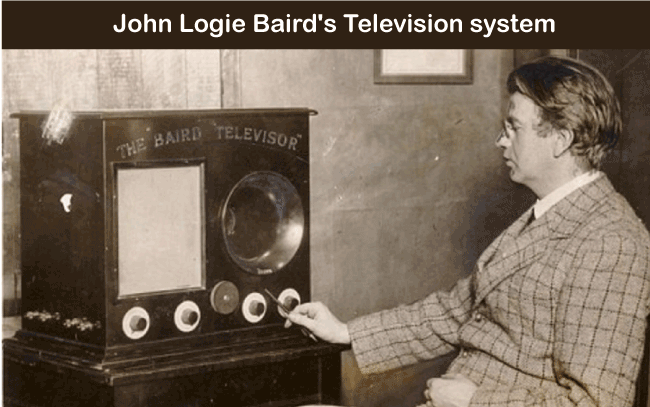
Father of TelevisionJohn Logie Baird, who is considered the Pioneer as well as the "Father of Television", was a Scottish Inventor. He was born on 13th August 1888 in Scotland and died on 14th June 1946 in England. He was an Engineer by profession. He did his diploma as well as a graduate degree in Electrical Engineering from the University of Glasgow. Baird is known for the invention of Mechanical Television. He was the first to demonstrate a working television in the 1920s as well as he got the patent for his experiment with a transparent rod that allows conveying pictures on the television. Inventions by John BairdBaird's first demonstration of television was 30-line images by reflected light instead of backlit. Baird was inspired by Nipkow as he had taken ideas from his experiments in electronics. In 1925 Baird developed the first moving image, which was the image of a human face on television. In 1926 he demonstrated it at Royal Institution in London. Baird's breakthrough was when his moving picture was broadcasted across the Atlantic in 1928. Before 1930, Baird demonstrated several developments in television like; Color Television in 1928, Stereoscopic Television as well as Television by Infrared Light. In 1929 the TV broadcast was begun by BBC. The first broadcasting was done on Baird's 30-line television. In 1930 the first sound, as well as the picture of television, was broadcasted. The name of the first play on television was the man the flower in his mouth. Marconi-EMI'S electronic TV was the world's first high-resolution system with 405-lines. BBC used this technology in place of Baird's technology in 1936. Therefore as this electronic technology was more efficient, it replaced Baird's mechanical technology. Why mechanical television system failed?The main reason behind the failure of mechanical television was its unclear or very bad pictures as well as a small screen that was only of 30-60 lines. In mechanical television, to produce a picture, a motor is used to rotate a metal disk with a neon tube behind the metal disk to give the light. Therefore its unclear or bad picture quality makes this technology unsuccessful. On the contrary, Philo Farnsworth realized that electronic technology could transmit good quality images in less time in comparison to mechanical technology. Hence the technology that needs to give television its mass appeal is electronic television. 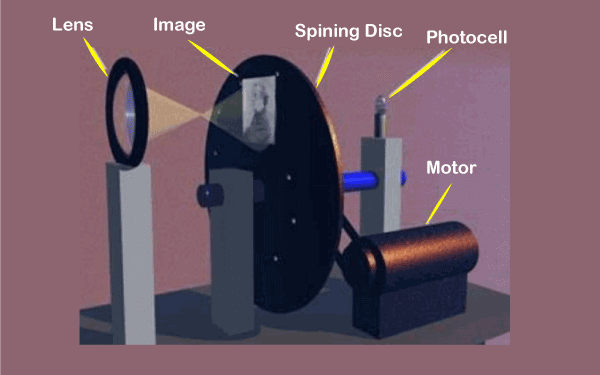
The poor picture quality and the screen of Mechanical Television: - 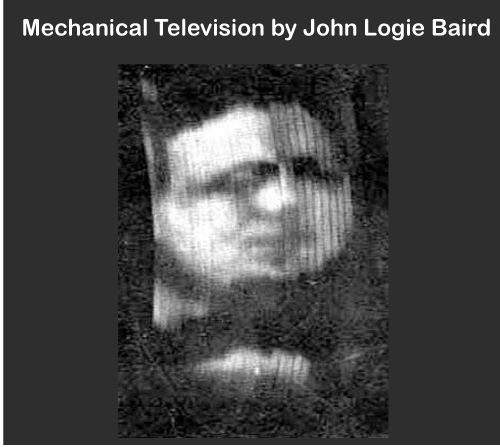
Who demonstrated first electronic television?It was Philo Taylor Farnsworth who demonstrated the first Electronic Television on 7th September 1927 in San Francisco. Philo Taylor Farnsworth developed electronic television at the early age of 21. He had a long experience living without electricity as he lived a long time as of his early 14 years without electricity. However, the patent for electronic technology was first filed by Vladimir k. Zworykin, a Russian inventor in 1923. But his television could not start working until 1934, while Farnsworth's successful demonstration of the first TV signal transmission was before Zworykin on 7th September 1927. This demonstration he made with his own developed scanning tube. Afterward, RCA Company also claimed for the patent as Zworykin was the employee in the company. But the Court gave a decision in favor of Philo Taylor Farnsworth, as he became the first inventor of all-electronic television. 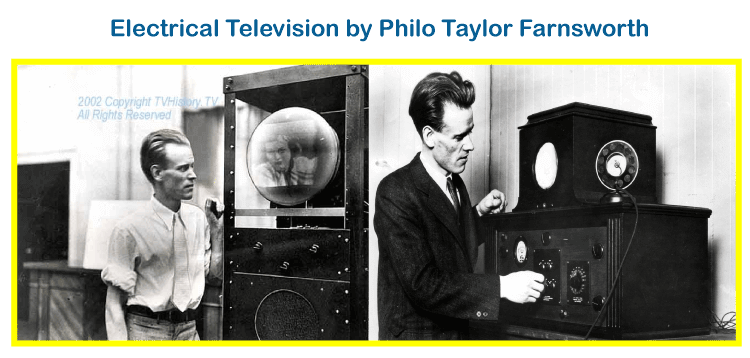
DevelopmentThe development of mechanical television Charles Francis Jenkins, an American, invented the system in June 1923. The system was called "Radiovision," and it was different from the earlier developments. Two years later, he performed the first-ever television broadcast from Virginia to Washington. After that, it was Kenjiro Takayangi with a 40-line resolution. Later, he was influenced by the work of Vladimir K. Zworykin and used his idea to develop the electronic television and developed the same in 1935. In 1927, a demonstration on mechanical television was given by the two scientists of Bell lab, named Herbert E. Ives and Frank Gray. This demonstration was appreciated by Albert Abramson, a television historian. He said that: "the demonstration on mechanical television system was indeed the greatest ever until now. Perhaps long time ago there might be a system that could be compared with its good quality image." The world's first television station known as "WGY Television" was started by WRGB in 1928. In the Soviet Union, in 1925, Leon Theremin of Russia was developing a system, first with a 16-line, then after improvement, it becomes 32-lines, and finally of 64-lines by 1926. He used the electrical method for his development as well as portrays the pictures in motion on a big screen as of a five-foot square. Further, he made more improvements in his invention and created a picture of 100-lines by 1927. After this, in 1931, RCA made a new improvement with 120-lines. A passionate inventor Anton Codelli, also inspired by this technology, tried to make new improvements. However, despite so many improvements still, the technology was unable to produce the required resolution for a clear image. In 1929, he made a system with a single line that was forming a continuous spiral on display. But due to some reasons, his television was impractical as it could not use commercially. An electronic television emerged as the dominant system due to its cathode-ray or camera tubes as well as its better picture quality. The advancement of this television marked the beginning of the end of mechanical, which remained the main type until the 1930s, as well as its last broadcasts ended in 1939 in the United States. In the electrical television, there was some experiment before Farnsworth's invention. One of them was Kenjiro Takayanagi from Japan, who demonstrated a system with a 40-line resolution that employed a CRT (Cathode Ray Tube) on 25th December 1926. However, this was the first example of fully electronic television, but Takayanagi did not apply for a patent. So the credit went to Philo Farnsworth. When RCA lose the claim that he had filed for the patent of electrical television before Farnsworth, he decided to make a compromise with Farnsworth and used his patent for the manufacturing of television. For this, he has to pay him US$1 million for ten years. Manfred von Ardenne gave a public demonstration after that in 1932 Isaac Schoenberg with EMI engineering team, in Britain filed a patent for "the EMITRON", an important part of the cameras which they made for the BBC. After this, they developed it in SUPER-EMITRON and CPS-EMITRON, respectively. BBC used it in 1937 on Armistice Day. BBC broadcasted a live show of the king's laying wreath at the cenotaph for the common people on television. After rapid development, United States implemented 525- line television in 1941. However, in 1944 Russia developed the first television of 625-lines, which later in 1948 considered a national standard in Moscow. Afterward, the European CCIR also adopted the 625 - lines system as their standard. In the 625- line system, new developments were made as the first flat panel display system (plasma display) was introduced by Kalman Tihanyi in 1936. In 1978, James P Mitchel introduced the first LED system that tried to replace the CRT. 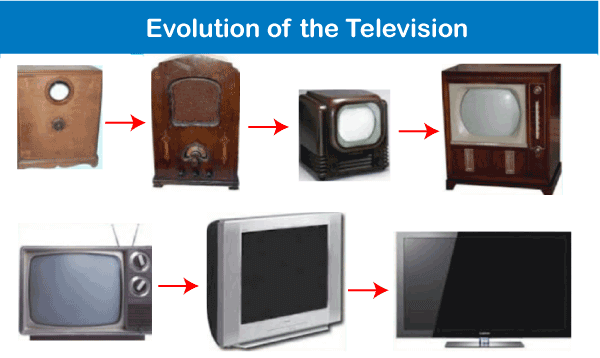
So in this way, with regular technological innovation, there was an evolution in television technology. First, Black and White televisions were invented after that Color Television, then after Cable Television, Satellite Television, Internet Television, Digital Television, Smart Television, 3D Television, and more. So rapidly, television has become a popular means for entertainment as well as for mass communication. Now it becomes a part of our life as we cannot imagine a life without it.
Next TopicAdvantages of Automation Testing
|
 For Videos Join Our Youtube Channel: Join Now
For Videos Join Our Youtube Channel: Join Now
Feedback
- Send your Feedback to [email protected]
Help Others, Please Share










